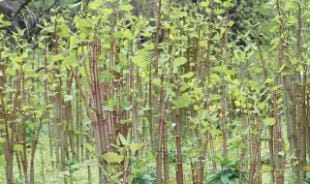If you ever stumbled upon a rampant plant in your garden and wondered if it is Japanese knotweed, you are not alone. The rapid growth and invasive nature of Japanese knotweed have made it the UK homeowners most notorious nuisance plant. However, it’s not the only green invader out there. Sometimes, Japanese knotweed lookalikes, or plants with similar growth habits, can create identification confusion. This article examines the plants that look like Japanese knotweed and distinguishing knotweed with plants that have similar characteristics. We’ve included pictures of common bindweed and the other mistaken plants that look like Japanese knotweed.
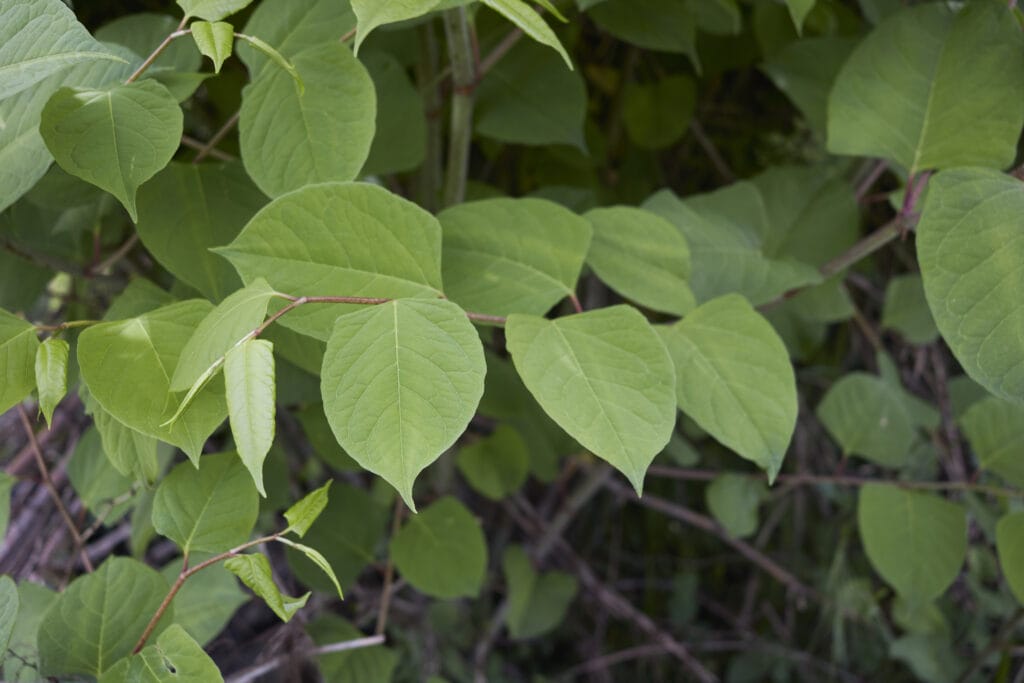
The distinctive leaves of Japanese knotweed (Reynoutria japonica) iStock/seven75
What are the plants mistaken for Japanese knotweed?
If you are a home owner looking to sell, it is particularly important to be accurate when identifying Japanese knotweed. PBA has provided assistance identifying invasive plant species for over 20 years. During that time we have compiled a list of plants mistaken for Japanese knotweed.
Broad Leafed Dock (Rumex obtusifolius)
Lilac (Syringa vulgaris)
Bindweed (Convulvulus arvensis)
Bamboo (Bambuseae & Arundinarieae species)
Russian vine (Fallopia baldschuanica)
Houttuynia (Houttuynia cordata)
Buckwheat (Fagopyrum esculentum)
Dogwood (Cornus sanguinea)
Giant fleece flower (Persicaria polymorpha)
Red bistort (Bistorta amplexicaulis, synonym Persicaria amplexicaulis)
Redshank (Persicaria maculosa)
Ivy (Hedera helix)
Ground elder (Aegopodium podagraria)
Himalayan Honeysuckle (Leycesteria Formosa)
Commonly known as Pheasant Berry and Himalayan honeysuckle. This beautiful plant has the habit of seeding itself all over the place. However, it can’t really be described as invasive and isn’t a ‘Schedule 9 plant‘. The image below shows how, at first glance, the leaves could be confused with Japanese knotweed. Setting aside the striking berries, the other notable difference is how leaves grow in pairs along the stem. Japanese knotweed leaves grow alternately. This isn’t a plant to be concerned about, though it will produce seedlings each year.
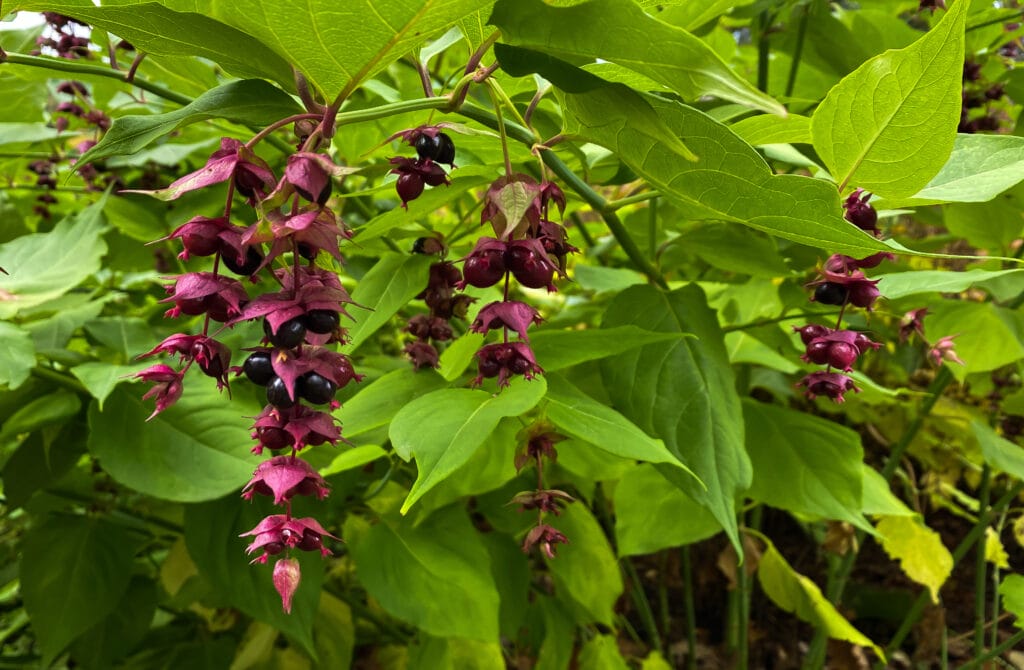
Himalayan Honeysuckle (Leycesteria formosa) with berries in autumn iStock/Annetka
Broad leafed dock (Rumex obtusifolius)
Looking at the photo below tells you all you need to know about this commonly misidentified weed. It is not a plant that looks like Japanese knotweed. However, the newly unfurling leaves provide an identifier that contributes to it being one of the plants mistaken for Japanese knotweed. Dock grows as a multi-leaved plant from individual tap roots. When its central flower spike is included, the plant can reach a metre in height. In contrast, Japanese knotweed will normally grow to at least two metres, with many leaves growing from each main stem.
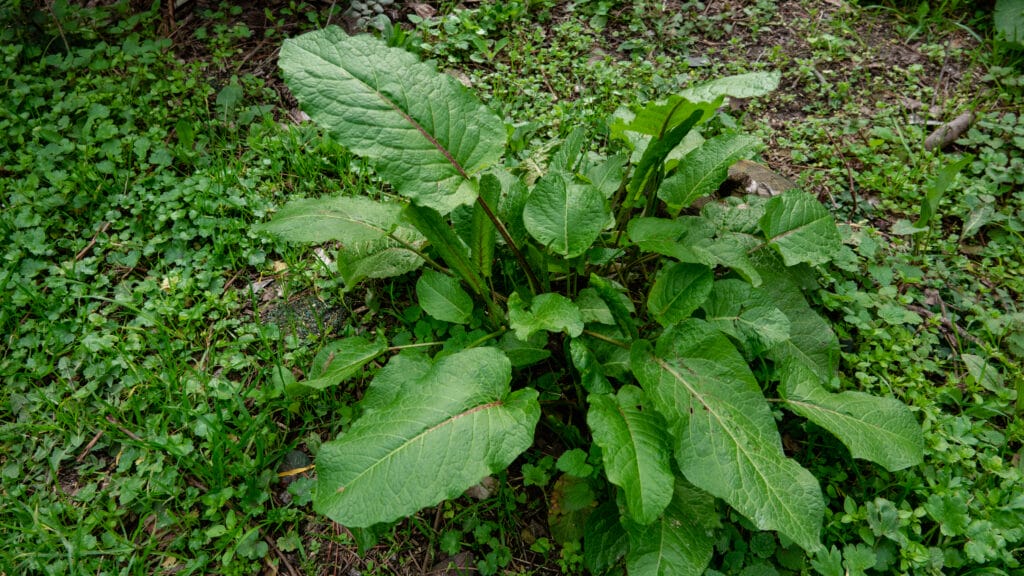
The leaves of Broad leafed dock (or Bitter Dock) known as Rumex obtusifolius iStock/Arda ALTAY
Lilac (Syringa vulgaris)
Lilac is a garden favourite and is often a plant mistaken for Japanese knotweed. Spade shaped leaves and lush green foliage contribute to it being one of the plants that look like Japanese knotweed. Although it will send up lots of small suckers, that is the extent of its invasive capabilities. The plant’s woody stems help distinguish it – a quick and easy identifier – from the hollow stems of Japanese knotweed. Don’t herbicide spray your lilac bush in error – spring will bring thousands of beautiful, fragrant white or ‘lilac’ flowers.
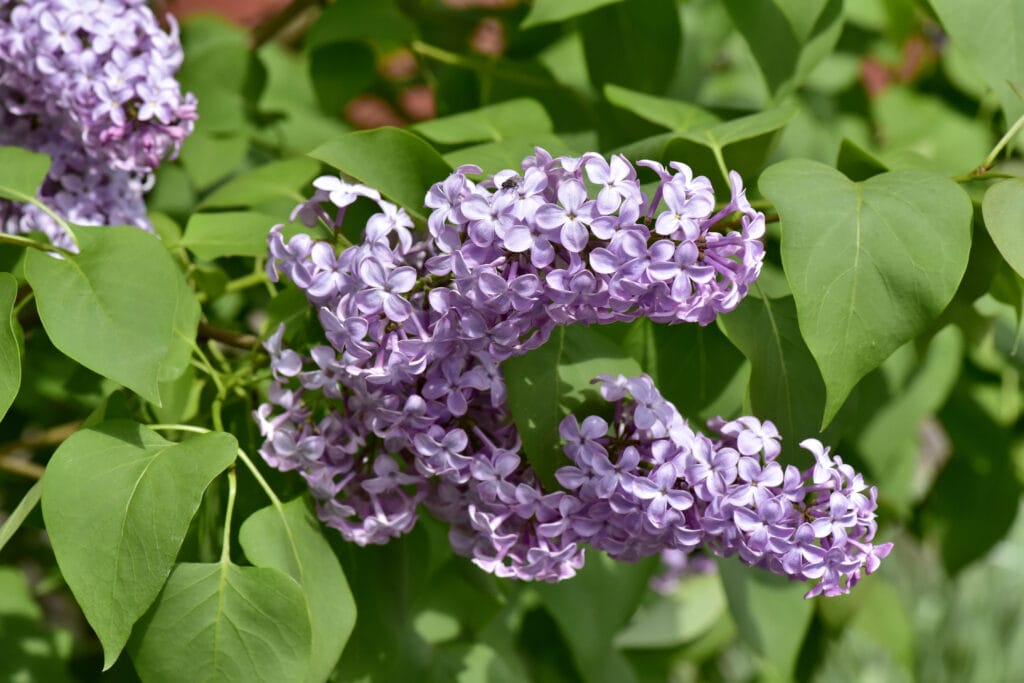
Lilac flowers on a branch in spring iStock/andwill
Bindweed (Convulvulus arvensis)
Bindweed is annoying and frustrating weed to deal with. Given the opportunity, it will climb through your favourite shrubs and become entangled branches, stems and leaves. Bindweed works its way up to the light by wrapping its thin stems around anything that’s available. It’s this characteristic that challenging to remove. Ripping bindweed stems out often damages any soft stems and leaves on the host plant as well. If you have the patience, you can unwrap each entangled stem to ground level, where you can then pull out the roots. Again, it’s the leaf shape that makes bindweed appear similar to Japanese knotweed. Looking carefully at the leaves, you’ll see that they are heart shaped, with lobes either side of the stalk. This is quite different to the thinker leaf of Japanese knotweed.
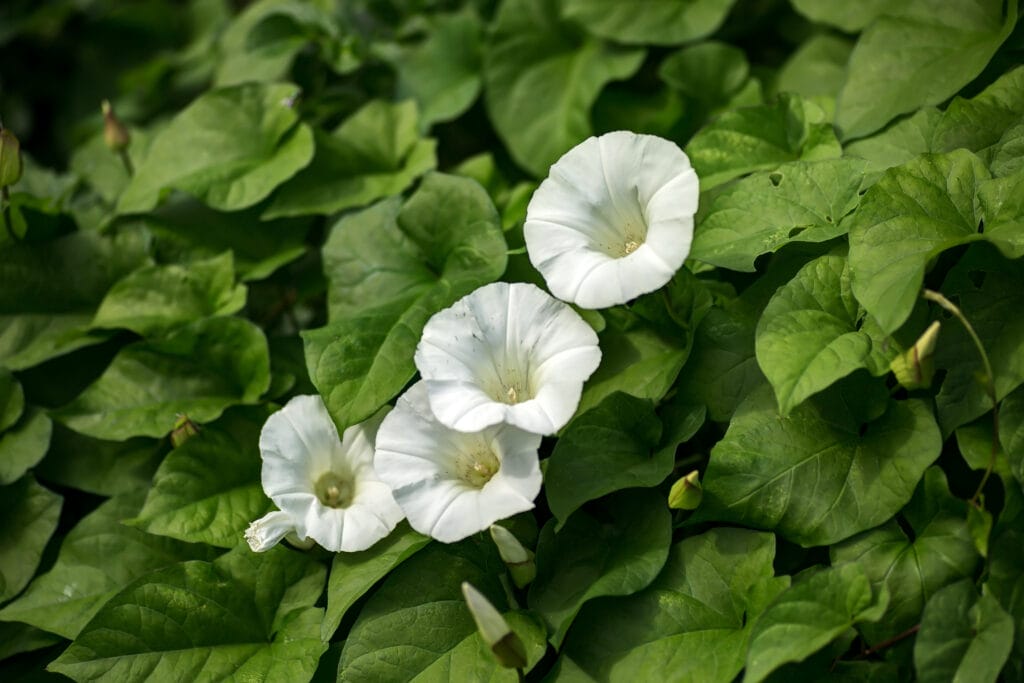
Hedge Bindweed (Calystegia sepium) iStock/jamesvancouver
Bamboo (Bambuseae & Arundinarieae species)
Visually, it would be difficult to mistake bamboo for Japanese knotweed. Japanese knotweed shoots can look similar to bamboo stems, and they both produce canes, but there the visual similarity ends. Japanese knotweed leaves and bamboo leaves are quite different shapes. In fact, in late autumn, Japanese knotweed loses its leaves altogether. In contrast, bamboo planted in the UK usually retains its leaves all year round.
It’s in their growth habits the plants share common ground. Many bamboos, particularly running bamboo varieties, can spread several metres via their bamboo rhizomes. All of the associated knotweed problems can be attributed Japanese knotweed rhizomes, and bamboo rhizomes can be similarly aggressive.
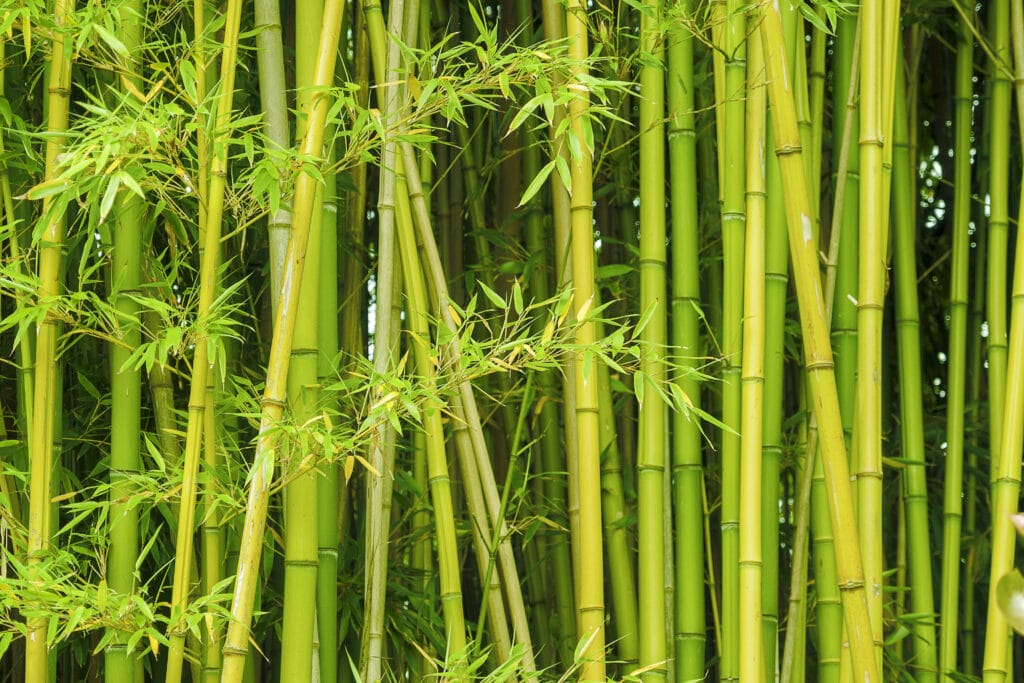
Bamboo (Bamboo bambuseae) canes iStock/prill
Russian Vine (Fallopia baldschuanica)
The name ‘Mile-a-Minute’ might give you some idea of how quickly this vine-like perennial grows, quickly swamping most other plants in the area. It’s closely related to Japanese knotweed – these two can actually create hybrids – yet it doesn’t have the same fearsome reputation. The leaf shape and flowers are very similar, although Russian vine leaves are more arrow-shaped than Japanese knotweed leaves. The lack of tall stems and its scrambling, untidy habit are dead giveaways.
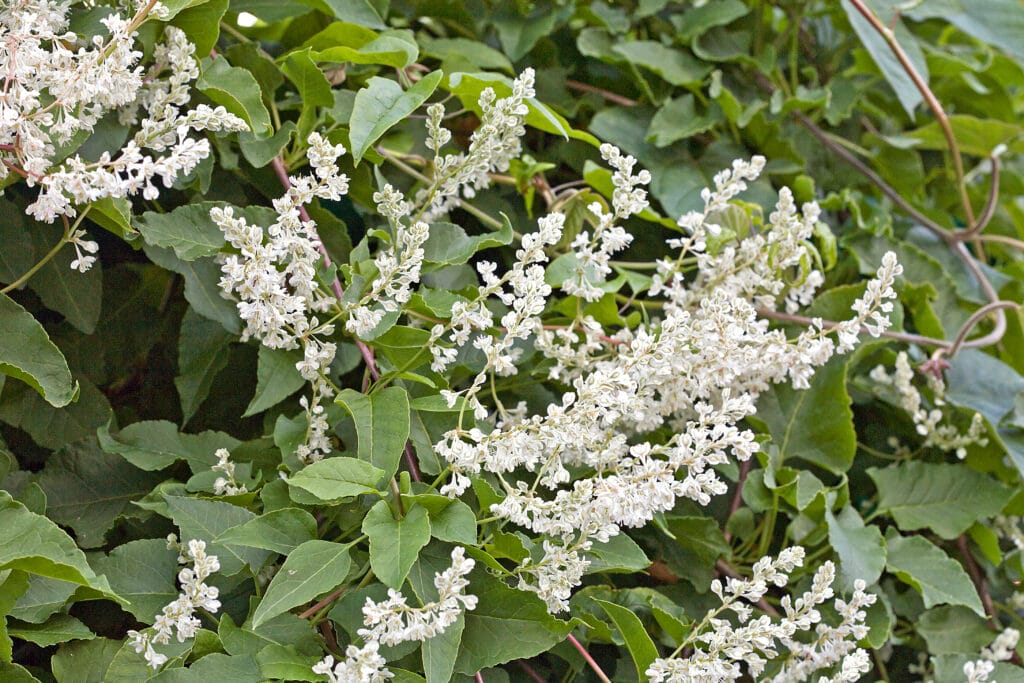
Russian vine (Fallopia baldschuanica) flowers and leaves iStock/PFMphotostock
Houttuynia (Houttuynia cordata)
Houttuynia are perennial plants with orange-scented, heart-shaped leaves and small white flowers. The picture below provides a hint to why houttynia can be mistaken for Japanese knotweed. Although it can easily spread through its rhizomes – enjoying moist soils – it generally only reaches 30 centimetres in height. Compare that to Japanese knotweed ,which grows to three metres tall in the right conditions, and it’s clear that the comparison ends there.
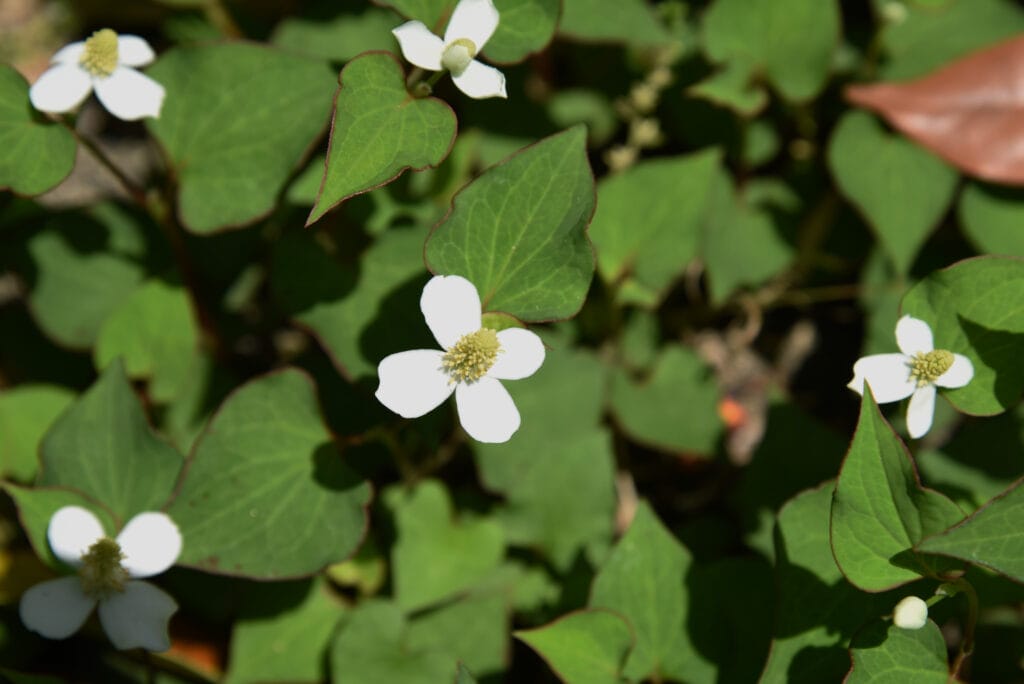
Houttuynia (Houttuynia cordata) flowers and leaves iStock/undefined undefined
Buckwheat (Fagopyrum esculentum)
Japanese knotweed and Buckwheat are herbaceous plants with hollow stems. Both produce small white flowers in late summer, and have leaves with pointed tips. Usually the leaves are a similar shade of green. However, there are several key differences. Japanese knotweed leaves usually have a pronounced straight edge along the side where the leaf joins the stem. In contrast, Buckwheat leaves curve around on each side of the main stem, forming a more heart-like shape.
Looking at the lifecycles of the two plants, they are quite different. Buckwheat is an annual, with single plants growing from seeds each year. Japanese knotweed is perennial that grows from rhizomes laying dormant in the soil over winter. Stems of Buckwheat plants will generally be straight; Japanese knotweed stems will zig-zag between the leaf stem nodes. Seeing this feature provides a handy identification clue. Generally, Buckwheat will not exceed 1 metre, whilst healthy Japanese knotweed is capable of 2 or 3 metres in height.
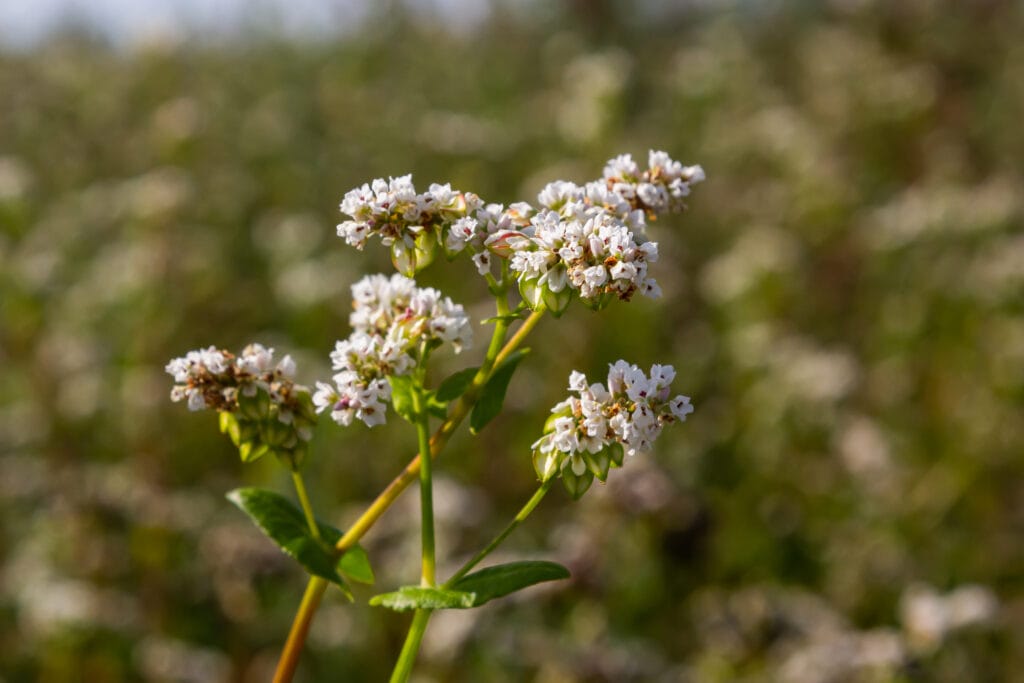
Blooming buckwheat (Fagopyrum esculentum) iStock/Oleg Marchak
Dogwood (Cornus sanguinea)
Dogwood is a woody shrub that shows off bright red stems in the cooler months of the year. This is probably the source of identification confusion with Japanese knotweed, a cluster of dogwoods can appear similar to a knotweed stand in the winter. Importantly, knotweed stems will only be tinted or flushed with red during the growing season (spring, summer and sometimes into the autumn). In contrast, Dogwood stems will take on this bright hue in the winter months and are usually far more brightly coloured than the drab knotweed canes. On Dogwood stems, colouring is very even, whereas knotweed is often blotchy and uneven.
As a woody shrub, Dogwood stems have a solid (woody) appearance all year round. Developed knotweed stems are hollow and ‘fleshy’ when alive and hollow and brittle in the winter. Most Dogwoods have leaves that grow opposite each other on the stems, whereas knotweed leaves grow alternately on stems that take a ‘zig-zag’ line.
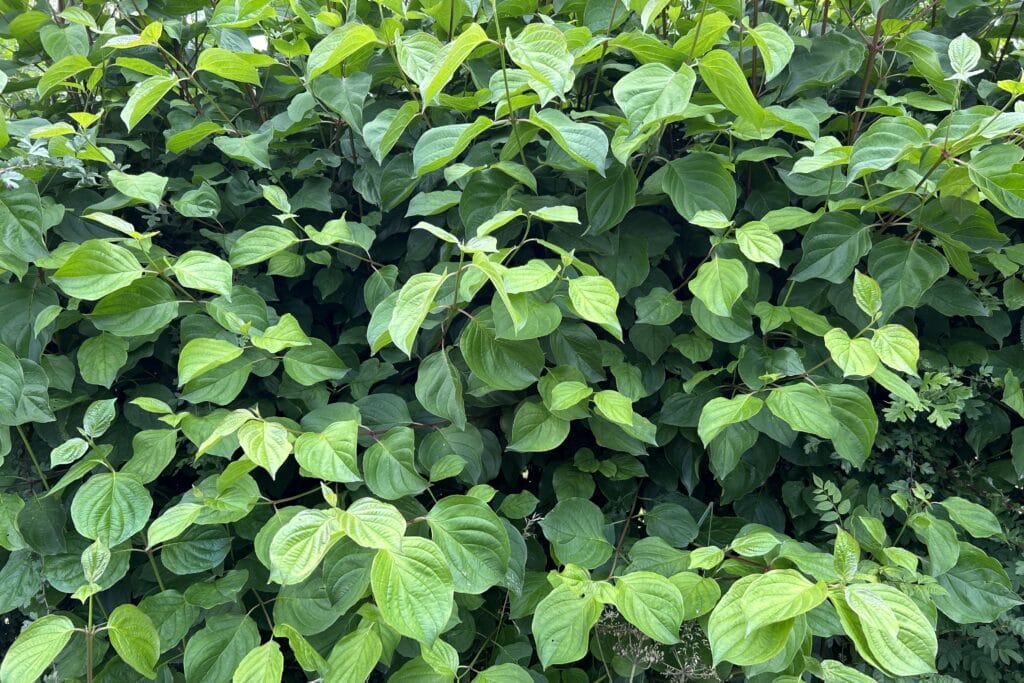
Dogwood (Cornus sanguinea) stems and leaves © 2023 PBA Solutions
Giant fleece flower (Persicaria polymorpha)
Many plants of the Persicaria family have similarities to Japanese knotweed. The Giant fleece flower is no exception, when reviewing plant pictures, it is one of the plants that look like Japanese knotweed. As its name suggests, it’s capable of really putting on a show each year, growing to heights of up to 5 feet, in clumps that are nearly as wide. It’s a relative newcomer to the garden retail scene in Britain, but reports from places where it is more commonly sold suggest that it is capable of becoming very invasive (container planting is recommended).
The spread of Giant fleece flower typically happens after the plant has become well-established in its setting (after 5 to 10 years). With zig-zagging, noded stems, leaves that end in a pointed tip and clusters of small white flowers, Giant fleece flower has a resemblance to Japanese knotweed. However, its leaves grow opposite each other from the stems, whilst Japanese knotweed leaves grow on alternating sides of the stem. As a hybrid, Persicaria polymorpha is unlikely to produce seeds that germinate. But again, much like knotweed, it is capable of cultivating well-developed rhizomes from the parent to establish new areas of growth. This looks like being one of those plants that’s best kept out of the wild.
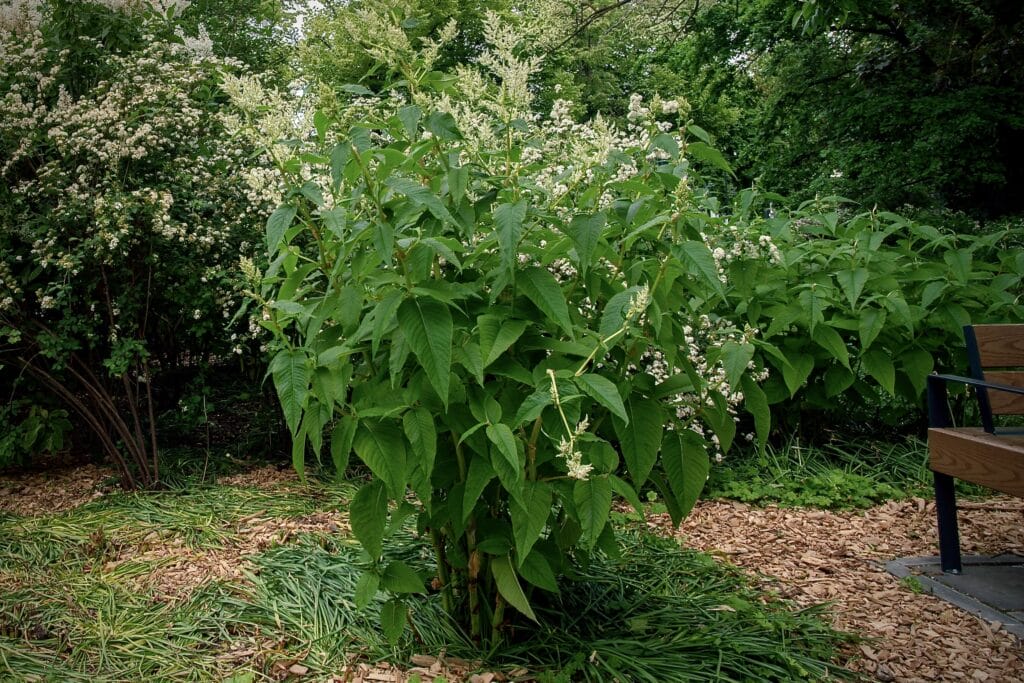
Giant fleece flower (Persicaria polymorpha) in blossom iStock/Fotofantastika
Red bistort (Bistorta amplexicaulis, synonym Persicaria amplexicaulis)
The issue over how to name Red bistort doesn’t detract from it being one of the plants mistaken for Japanese knotweed. A native of China and the Himalayas, Red bistort has the same zig-zagging stems that are a feature of Japanese knotweed. The leaves resemble those of knotweed but they are more elongated and the back edge is rounded – or lobed – not flat.
Often described as a clump-forming plant by retailers looking to convince you to buy. Other commentators have pointed out this plant’s spreading nature. Careful containment in the garden is probably wise. As we know, Japanese knotweed that is happy and healthy can easily put up stems that are 2 to 3 metres tall. Red bistort stems will struggle to get much past 1.2 metres and will only reach those heights under optimum growing conditions. The pink or red coloured flowers are borne on upright stems and look nothing like those of Japanese knotweed for this reason.
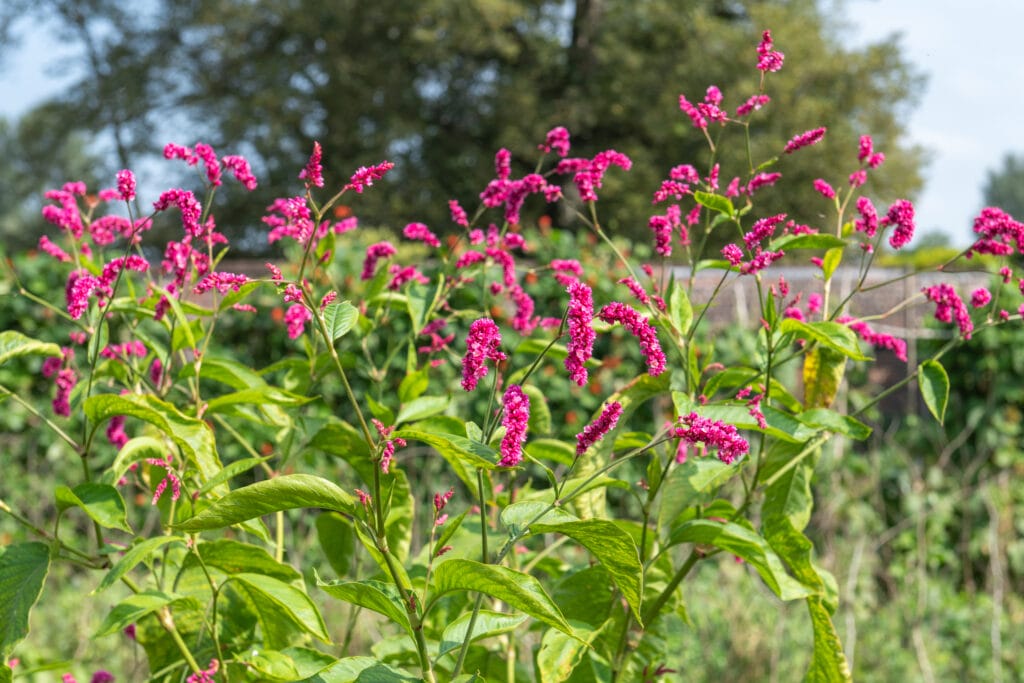
Close up of Red bistort (bistorta amplexicaulis) flowers in bloom iStock/Tom Meaker
Redshank (Persicaria maculosa)
A common weed from the Buckwheat family that thrives in wet places, fields and waste ground. Redshank is a plant that and can be found right across the British Isles, apart from the highest points of Scotland’s mountain ranges. Apart from alternately placed leaves and a noded, zig-zagging stem, there are very few characteristics of Redshank that match up with those of Japanese knotweed. The flowers, appearing normally in late summer, are usually a pale pink but may also appear in much deeper shades of red. As an annual, it spreads by seed production and dispersal. If you spot it in your garden you may want to consider removing the flowers before seed can ripen but, out in the wild it’s just there doing its thing.
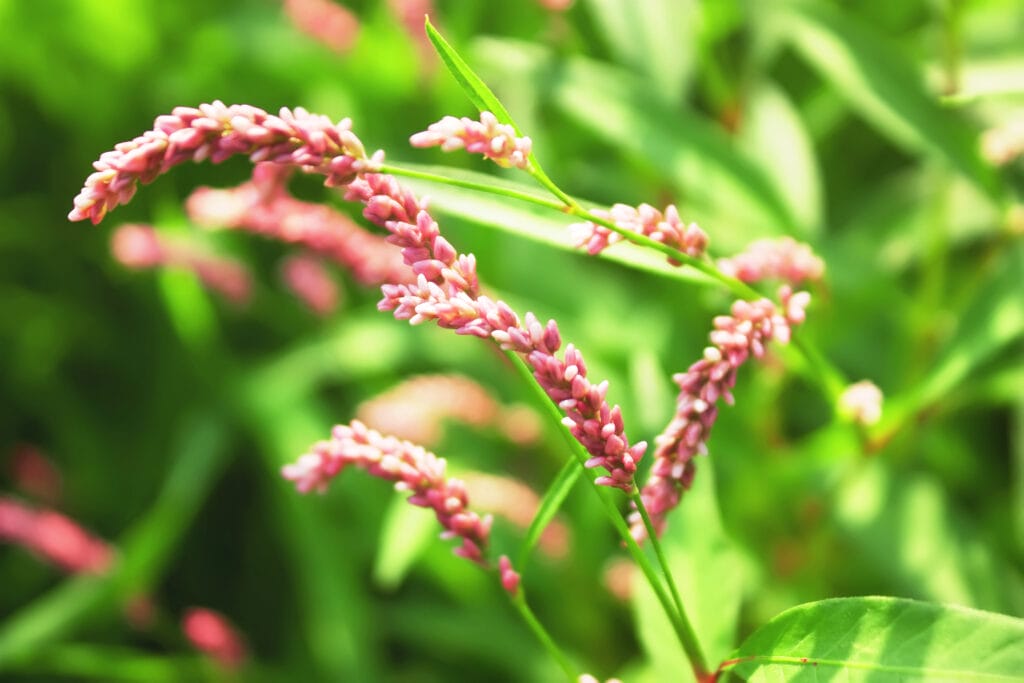
Persicaria maculosa (lady’s thumb, spotted lady’s thumb, Jesusplant, and redshank) in bloom iStock/Ekaterina Borisova
Ivy (Hedera helix)
Ivy is one of the most common plants in Britain, and one which is incredibly important for wildlife. A climbing plant, that can be seen clinging to tree stems and buildings alike, using specially adapted hairs that help it cling to surfaces. Hedera helix (ssp. helix) is one of two sub-species in Britain and is the only climber out of the two. The other form of ivy, Hedera helix (ssp. hibernica) spreads across the ground instead of climbing. The dark green, glossy leaves of Ivy are easily recognisable, but the vary depending on the maturity of the plant.
The young plant has leaves with three or five lobes. Whilst mature Ivy, has oval or heart shaped leaves with no lobes. Ivy can be infuriating, with the capability to swamp other plants, as well as small buildings. However, it makes a valuable ecological contribution, being an essential food source and home to many species of insects and birds. Neither of our native Ivy bear a resemblance to Japanese knotweed, but if you’re not sure of what you’re looking at, it’s always best to check.
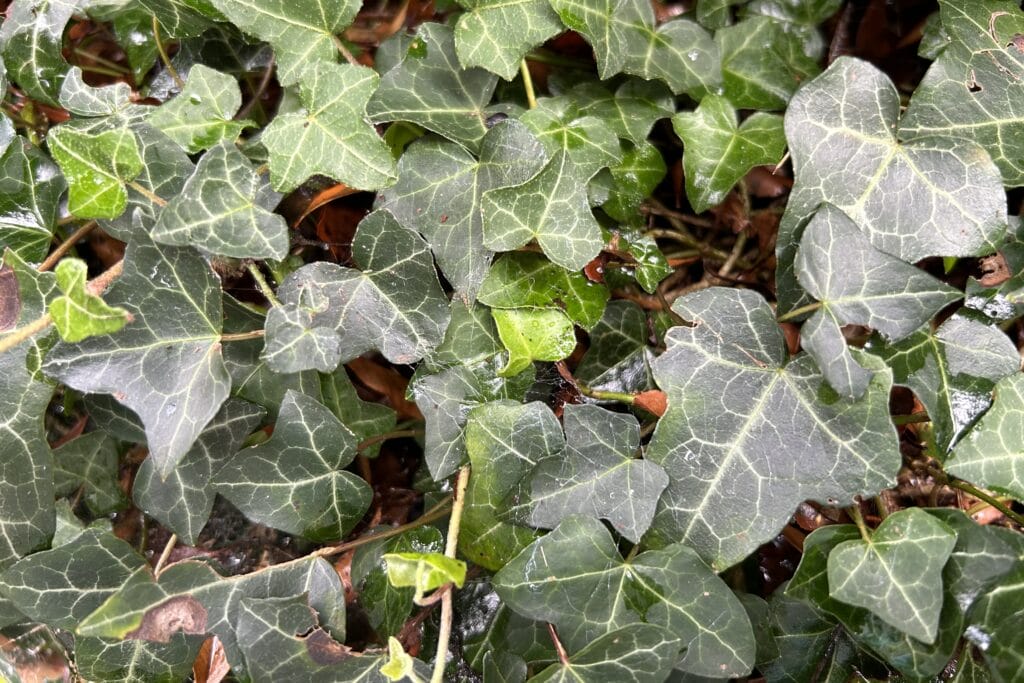
Leaves of Common ivy (Hedera helix) © 2023 PBA Solutions
Ground elder (Aegopodium podagraria)
As with Ivy, it’s hard to identify Ground elder as Japanese knotweed once seen side by side. It is a plant with invasive properties that regularly gets enquired about. Therefore, it is worth understanding more about Ground elder, or Goutweed (as it is referred to in the US). Fresh shoots appear in the spring, growing from rhizomes in the soil. The thin stems quickly develop leaves which are triangular, toothed and arranged in threes. Through late spring and into summer, umbels of tiny white flowers appear. These give the plant an attractive appearance as well as a little more height, up to 1m. An established patch of Ground elder will cover the ground, often to the detriment of other low growing plants. Although, not listed as an UK invasive species, Ground elder removal is often required because of the plant’s aggressive nature. it will produce many seeds, but Ground elder spreads mainly via its rhizomes. This aspect being a ‘match’ for Japanese knotweed.
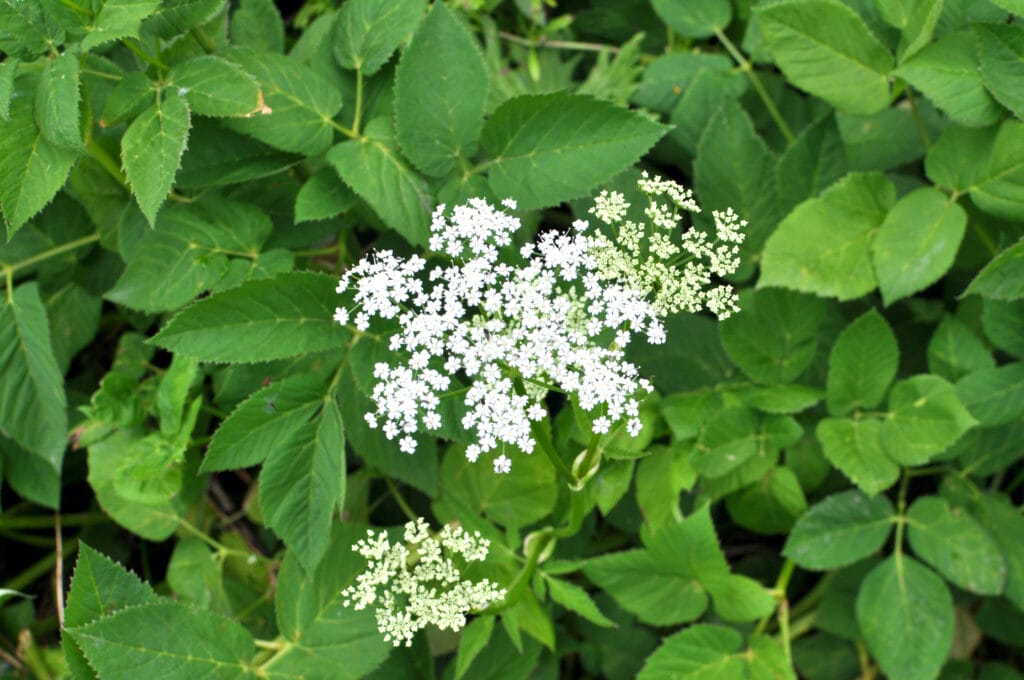
Ground Elder (Aegopodium podagraria) growing as a weed iStock/Orest Lyzhechka
The plants listed provide a sample of those we’ve been asked to identify by customers worried about Japanese knotweed. PBA Solutions can help you with our free ‘ID My Weed!’ service, and assist with the identification of plants mistaken for Japanese knotweed. Click the link and send us photographs of the suspect plant, including any additional details, your name and telephone number. Then, we will do our best to identify the weed for you.
PBA Solutions undertake site surveys to determine if Japanese knotweed is present, and document and report the findings. You can book a Japanese knotweed survey here. A Japanese knotweed survey will provide formal identification, an accurate record of where the knotweed is located and the most appropriate methodology for control or removal.
For further help and information concerning plants mistaken for Japanese knotweed, call our team on 0203 174 2187 or 01202 816134.
Lead image iStock/undefined undefined


